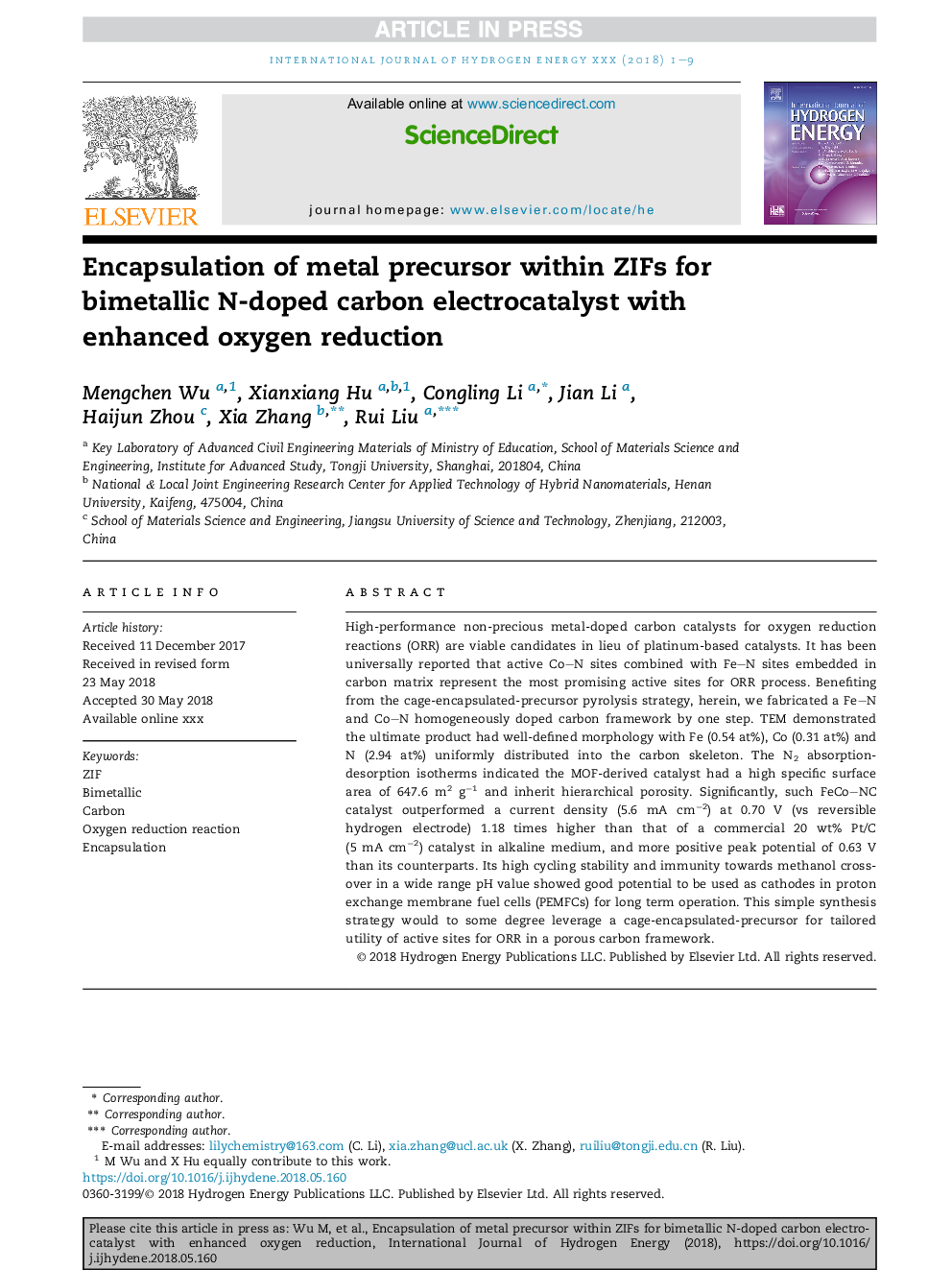| Article ID | Journal | Published Year | Pages | File Type |
|---|---|---|---|---|
| 7705411 | International Journal of Hydrogen Energy | 2018 | 9 Pages |
Abstract
High-performance non-precious metal-doped carbon catalysts for oxygen reduction reactions (ORR) are viable candidates in lieu of platinum-based catalysts. It has been universally reported that active Co-N sites combined with Fe-N sites embedded in carbon matrix represent the most promising active sites for ORR process. Benefiting from the cage-encapsulated-precursor pyrolysis strategy, herein, we fabricated a Fe-N and Co-N homogeneously doped carbon framework by one step. TEM demonstrated the ultimate product had well-defined morphology with Fe (0.54Â at%), Co (0.31Â at%) and N (2.94Â at%) uniformly distributed into the carbon skeleton. The N2 absorption-desorption isotherms indicated the MOF-derived catalyst had a high specific surface area of 647.6Â m2Â gâ1 and inherit hierarchical porosity. Significantly, such FeCo-NC catalyst outperformed a current density (5.6Â mAÂ cmâ2) at 0.70Â V (vs reversible hydrogen electrode) 1.18 times higher than that of a commercial 20Â wt% Pt/C (5Â mAÂ cmâ2) catalyst in alkaline medium, and more positive peak potential of 0.63Â V than its counterparts. Its high cycling stability and immunity towards methanol crossover in a wide range pH value showed good potential to be used as cathodes in proton exchange membrane fuel cells (PEMFCs) for long term operation. This simple synthesis strategy would to some degree leverage a cage-encapsulated-precursor for tailored utility of active sites for ORR in a porous carbon framework.
Related Topics
Physical Sciences and Engineering
Chemistry
Electrochemistry
Authors
Mengchen Wu, Xianxiang Hu, Congling Li, Jian Li, Haijun Zhou, Xia Zhang, Rui Liu,
